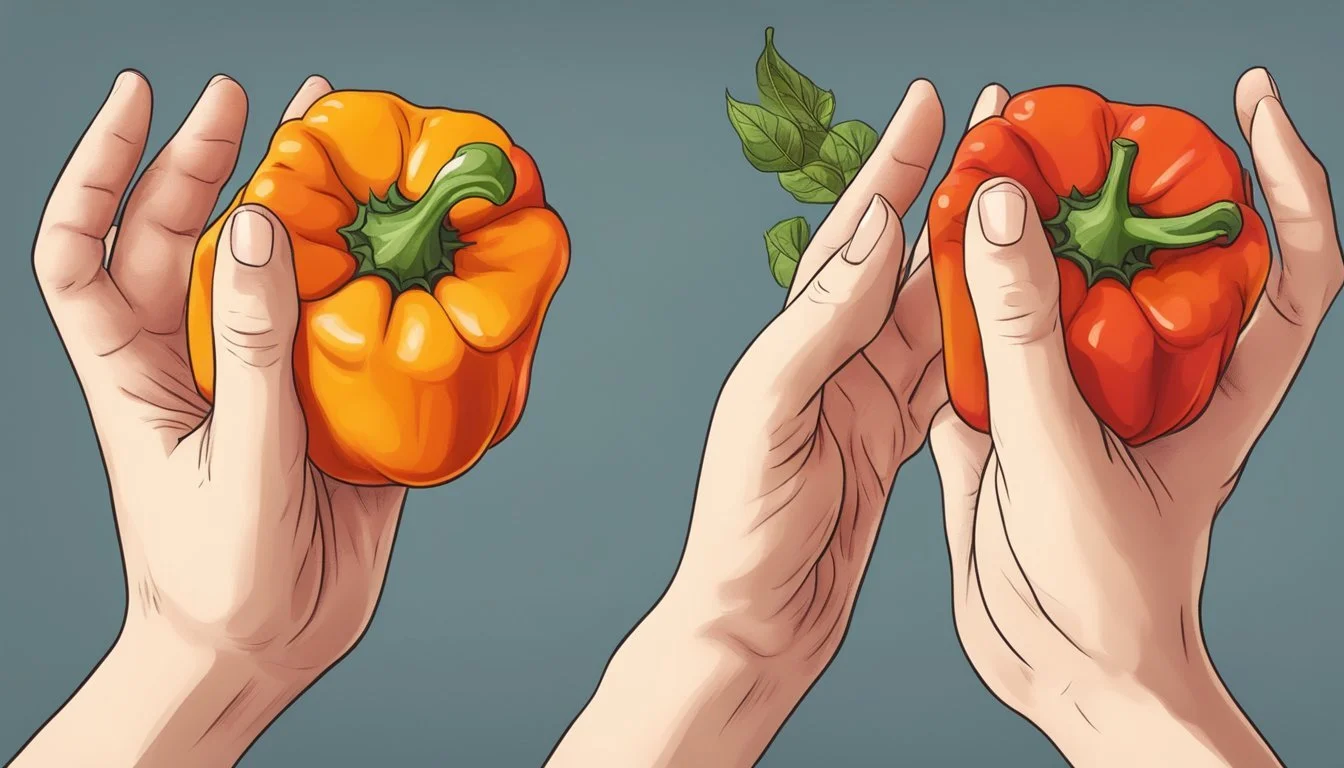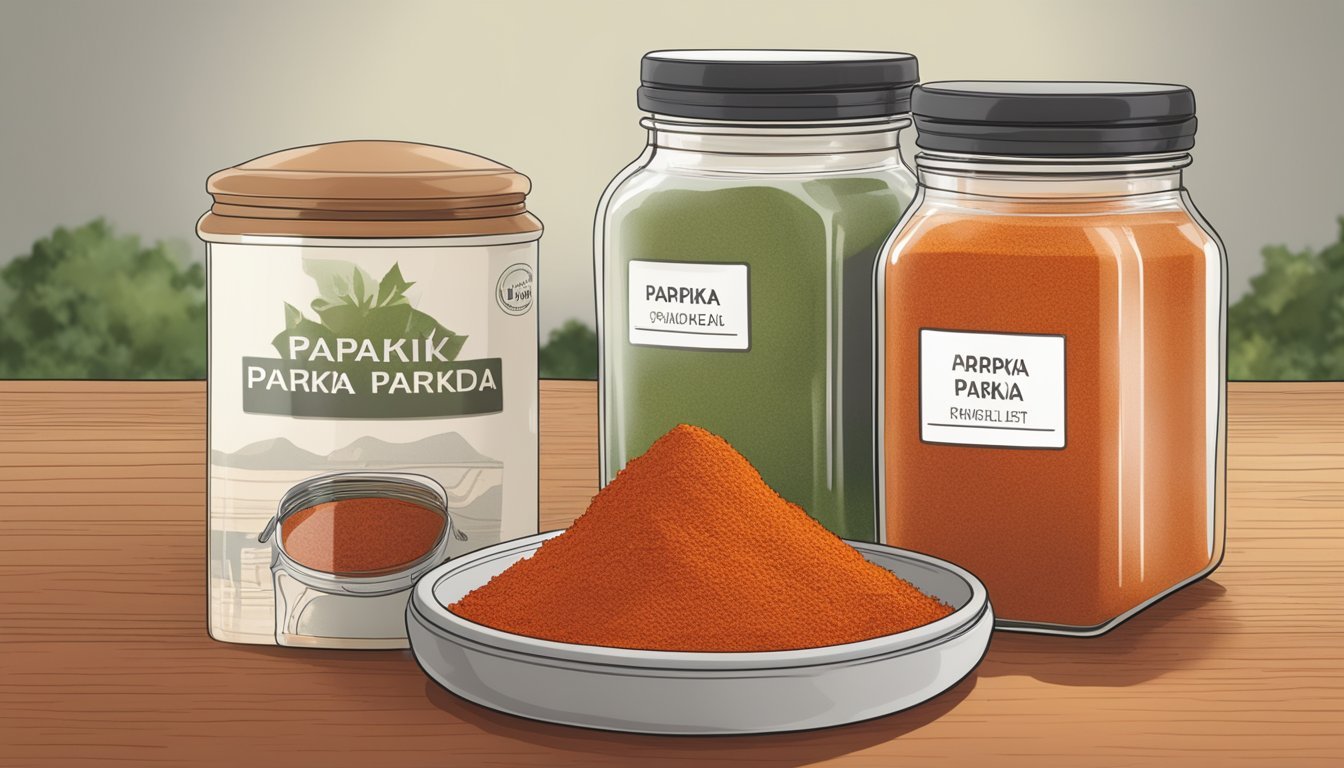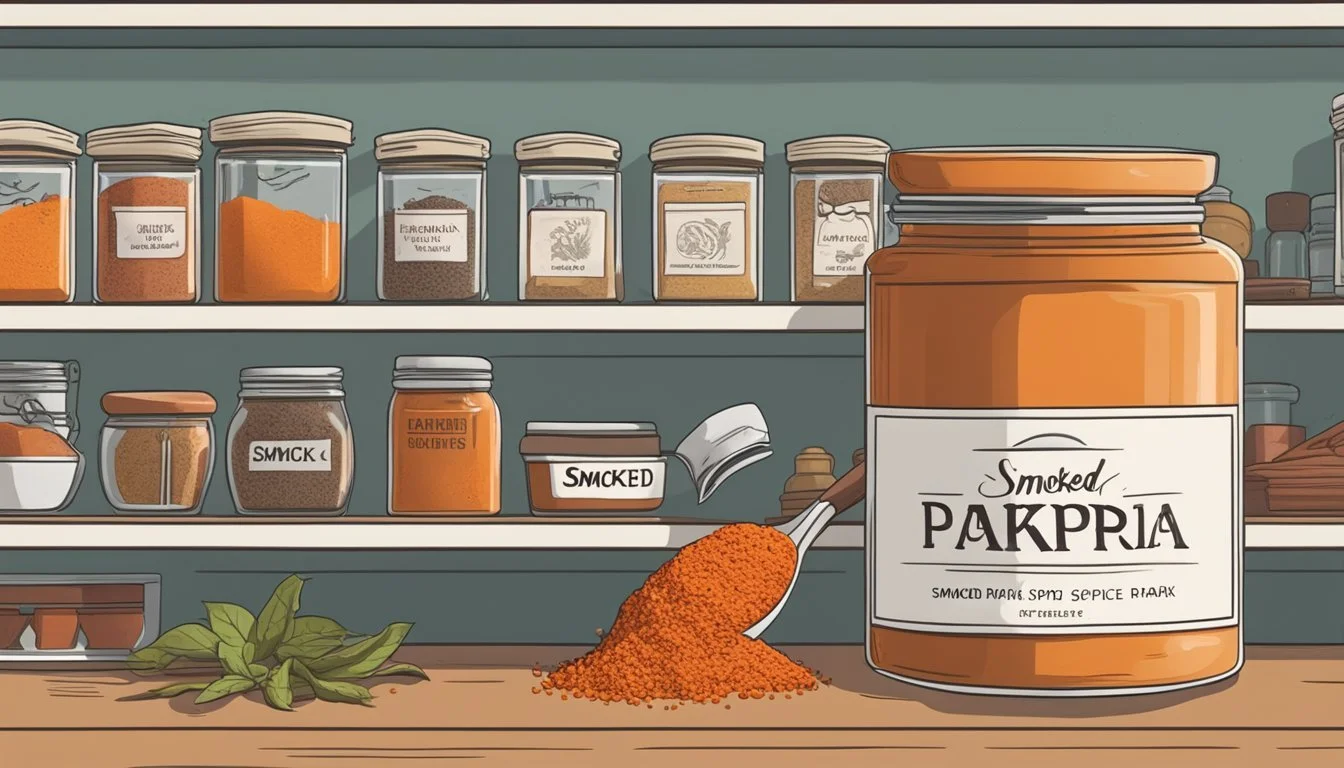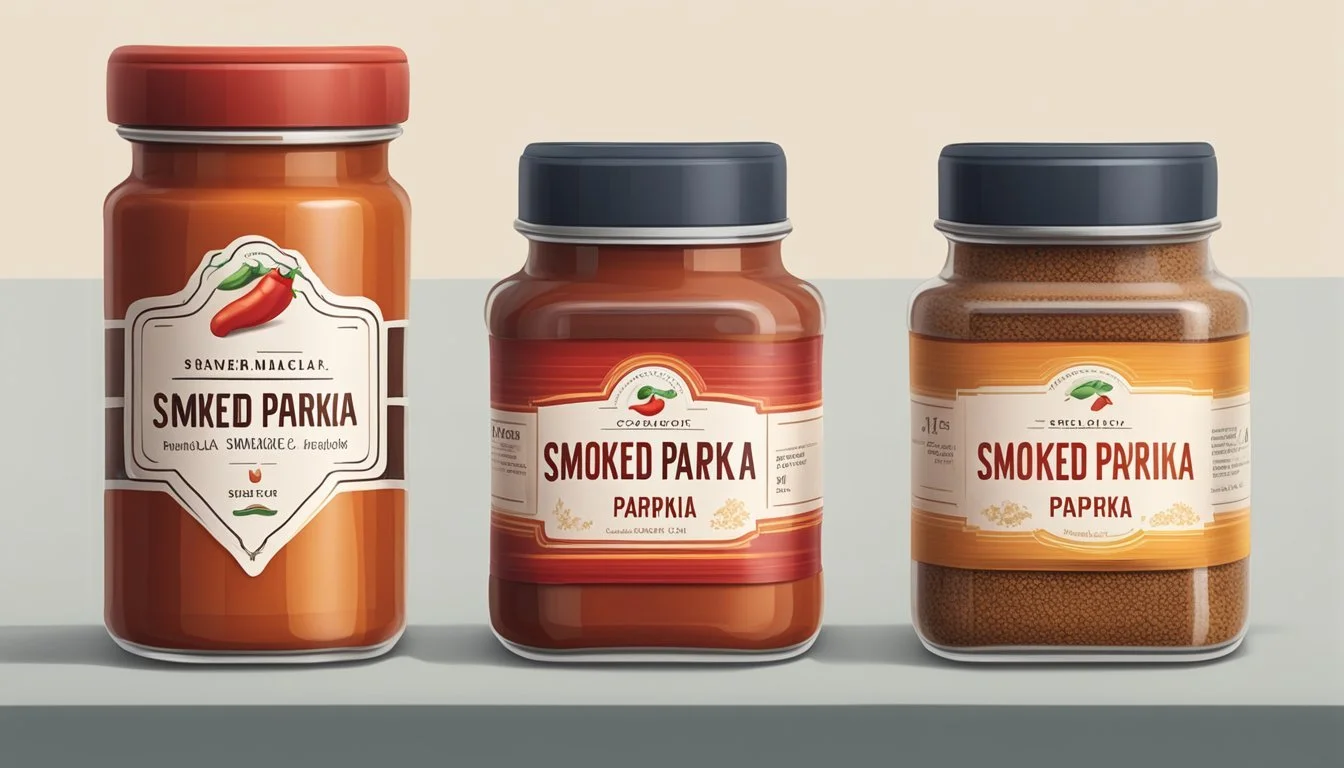How to Substitute Paprika for Smoked Paprika
A Flavorful Swap Guide
When a recipe calls for smoked paprika and it's nowhere to be found in the pantry, it can be a moment of true culinary frustration. Smoked paprika, known for its distinct smoky flavor and rich color, is a staple ingredient in numerous dishes, including Spanish, Hungarian, and South American cuisines. It's made from pimento peppers that have been dried and smoked over an oak fire, then ground into a fine powder. Its unique taste is difficult to replicate, but fortunately, there are several substitutes that can save the day without compromising much on the overall flavor profile of a dish.
Understanding the essence of smoked paprika's flavor is key to finding the right substitute. This spice is not just about smoke; it also imparts a subtle earthiness and a hint of sweetness that balances its warmth. One may consider chipotle powder, which is derived from smoked jalapeños, to provide a similar smokiness, though with a different heat level. Another option is to blend regular paprika with ground cumin, which imparts a slightly different but complex flavor that can often suffice in the absence of the real thing. In incorporating these substitutes, proportion and taste preferences should guide the culinary adjustments.
Experimentation and taste adjustments are part of the cooking process when substituting ingredients. While finding a perfect match for smoked paprika's flavor is a challenge, the suggested alternatives help maintain the integrity of the dish's intended flavor as closely as possible. Cooks may need to adjust quantities and mix spices to meet the desired taste, considering the heat and smokiness levels of their chosen substitute.
Understanding Paprika Varieties
The variations of paprika, which stem from different types of capsicum peppers, offer a range of flavors and smokiness. Comprehension of these distinctions is essential for selecting the best substitute for smoked paprika.
The Basics of Paprika
Paprika is made by grinding dried capsicum peppers into a fine powder. The peppers used can range from sweet to hot, influencing the spice's flavor profile. Paprika varieties include:
Sweet Paprika (Hungarian Paprika): Mild with a sweet note.
Hot Paprika: Often sharper and spicier.
Spanish Paprika (Pimentón): Available in sweet, bittersweet, and hot varieties; may or may not be smoked.
This diversity originates from the processing methods and regions in which the peppers are grown, with the two most noted types being Hungarian Paprika and Spanish Paprika or Pimentón.
Distinguishing Smoked Paprika
Smoked Paprika differs significantly from its unsmoked counterparts. Here are specific characteristics:
Process: It's made by smoking capsicum peppers over wood fires before grinding them into a powder.
Flavor Profile: Offers a distinct smoky taste and is known in Spanish as "Pimentón de la Vera."
Variants: It can be found in different heat levels, including sweet (dulce), bittersweet (agridulce), and hot (picante).
Identifying smoked paprika involves recognizing both its smoky aroma and the depth of flavor it brings to dishes, which is not replicated by regular paprika.
Flavor Profiles and Heat Levels
Substituting paprika for smoked paprika revolves around balancing two key components: the flavor spectrum from sweet to smoky, and the heat level, which may vary significantly.
Exploring Flavor Components
The primary flavor of regular paprika tends to range from sweet to earthy. In contrast, smoked paprika imparts a distinctive smoky taste due to the Spanish peppers being smoked over wood fires. This smoky element is a complex undertone that can deepen the overall flavor profile of a dish.
Regular Paprika: Sweet, earthy Smoked Paprika: Smoky, deep, rich
Assessing Spice and Heat
When it comes to heat, paprika can be categorized into sweet, which holds no heat, and hot, which carries a bit of a punch. The Scoville scale measures spiciness in Scoville Heat Units (SHU), but regular paprika generally falls at the lower end of this scale, as its primary role is coloring and flavoring rather than adding heat.
Heat Levels:
Sweet Paprika: Mild with negligible SHU
Hot Paprika: Higher on the Scoville scale, noticeable spicy flavor
To replicate the heat of smoked paprika, one might seek out chili powders or peppers that provide a smoky note without overpowering the dish with spiciness. The trick lies in starting with smaller quantities of the substitute and adjusting according to taste and desired heat level.
Substitutes for Smoked Paprika
In the absence of smoked paprika, certain spices and ingredients can function effectively to replicate its warm, smoky essence and color. The alternatives listed here offer a range of flavors from mild to hot, enabling the replication or transformation of the desired smokiness in any dish.
Best Substitutes and Alternatives
When seeking a substitute for smoked paprika, the intensity of smoke, flavor, and heat are significant considerations. Here are prominent alternatives:
Chipotle Powder: Derived from smoked jalapenos, it provides a comparable smokiness and a touch of heat.
Liquid Smoke: A few drops impart a smoky flavor, ideal for sauces and marinades.
Ancho or Guajillo Pepper Powder: With a milder heat, these powders offer a sweet, smoky taste.
Cayenne Pepper: For a spicier option, cayenne adds heat while lacking the smokiness.
Red Pepper Flakes: They can add the desired heat level; however, they lack smokey depth.
Garam Masala: A complex mix that can mimic some of the warm undertones of smoked paprika.
Using Spices as Substitutes
Spices can be carefully chosen to approximate the flavor profile of smoked paprika without overpowering the dish:
Cumin: While not smoky, it provides earthiness and can be mixed with other spices for a full-bodied flavor.
Regular Paprika and Oak: Combining sweet paprika with a whisper of ground oak or oak-smoked salt can lend both the color and a hint of the smoky profile of the original ingredient.
By carefully combining and balancing these substitutes, one can achieve a taste that resonates with the spirit of smoked paprika's unique flavor.
Recipe Adjustments and Applications
When substituting smoked paprika in recipes, cooks must consider how the alternative spices will affect both the flavor and color of the dish. The adjustments should maintain the integrity of the original dish while providing similar smoky notes and visual appeal.
Adapting Recipes with Substitutes
When smoked paprika is unavailable, various substitutes can be used to mimic its color and flavor in recipes such as sauces, soups, stews, and rubs.
Chipotle Powder: Offers a smoky flavor similar to smoked paprika with an added spicy kick. It is best used in dishes that benefit from a little heat.
Smoked Paprika Chipotle Powder 1 tsp 1 tsp
Regular Paprika + Cumin: Blend these two to approximate the color and add earthiness, though the smokiness will be less pronounced.
Smoked Paprika Regular Paprika Cumin 1 tsp 2 parts 1 part
Cayenne with Cumin: For recipes requiring heat, use this combination with care due to cayenne's intense spiciness.
Smoked Paprika Cayenne Pepper Cumin 1 tsp 2 parts 1 part
One should start with a modest amount of the substitute and then adjust to taste, especially when using spicier alternatives like cayenne.
Cooking Techniques
The technique employed in cooking can also impact the flavor of the substitutes. Here's how one can optimize the use of alternatives for smoked paprika:
For Sauces and Soups: Introduce the substitute spice early in the cooking process to allow the flavors to meld and develop depth.
For Stews and Rubs: With heartier dishes or when creating a rub, the substitute spices can be combined with other dry ingredients and applied directly to the main component to infuse the flavor throughout the cooking process.
Marinades: When using in marinades, it's important to mix the substitute spices thoroughly with the liquid components to ensure even distribution of flavor.
By carefully selecting the substitute and applying appropriate cooking techniques, one can effectively replicate the desired flavor profile of smoked paprika in their dishes.
Culinary Uses Beyond Substitution
While smoked paprika delivers a distinctive smoky flavor prevalent in Spanish cuisine, when substituting, one can employ alternative seasonings to not just mimic but also to enhance the natural flavors of various ingredients like vegetables and meats.
Enhancing Vegetables and Meats
For vegetables such as cauliflower, a sprinkle of paprika powder can enhance its mild taste, offering a warm, slightly sweet note, while a touch of tomato paste can lend a rich color and deeper flavor. In meats, especially those found in Mexican cuisine, like in a traditional mole, a blend of regular paprika and cumin might not replicate the smoky taste but will add a complexity and richness to the dish. Using substitutes can sometimes introduce new and unexpected flavors that complement the primary ingredients effectively.
Vegetables:
Cauliflower: Paprika for sweetness, Tomato paste for richness
Others: Use paprika powder to add vibrancy and subtle warmth
Meats:
Mole: Combine with cumin for complexity
General: Use substitutes to introduce complementary flavors
Creative Uses in Dishes
Paprika can offer more than a smoky flavor; it provides a brilliant red color that enhances the visual appeal of dishes like deviled eggs. While Spanish smoked paprika might be missed in the flavor profile, chefs can get resourceful by using a mixture of regular paprika and a pinch of cumin or cayenne for a burst of both color and spiciness.
Eggs:
Deviled Eggs: Paprika for color, Chipotle powder for a smoke-like flavor
Dishes with Red Color Requirement:
Use paprika to maintain red color while adjusting the flavor with other spices as needed
Shopping and Storage Tips
When searching for quality spices or trying to preserve their flavors, knowing where to purchase and how to store them is essential for any cook.
Where to Buy Quality Spices
One can find quality spices, including smoked paprika, at local grocery stores, specialty spice shops, and online marketplaces. When purchasing smoked paprika or spice blends containing it, look for reputable brands and consider reading product reviews when shopping online. Specialty spices are often better in quality, so seeking out dedicated spice merchants can yield a superior product. Here's a list of potential sources to purchase from:
Local grocery stores: They often have a spices section with varying quality.
Specialty shops: These stores focus on quality and freshness.
Online retailers: They offer a wide variety, and reviews can guide your choices.
Maintaining Freshness and Potency
Once you've sourced your smoked paprika, proper storage is crucial to maintain its freshness and potency. Spices should be stored in a cool, dry place away from direct sunlight. Glass or airtight containers are best for preserving flavor and extending shelf life, which for ground spices like smoked paprika is typically around two years. Always make sure your spices are tightly sealed after use. A couple of tips for storage include:
Use airtight containers to prevent moisture and other contaminants.
Store in a cool, dark place such as a pantry to protect from heat and light deterioration.
Keep track of shelf life: Label the container with the purchase date to ensure spices are used within optimal freshness.
By following these guidelines, one ensures that their spices retain their desired flavor profile and contribute effectively to any dish they're used in.
Cultural Context and History
The paprikas of the world, each with a unique story, contribute richly to the culinary heritage of diverse cultures, notably within Spanish and Hungarian cuisines. Diving into each variety reveals historical significance and a profound impact on traditional dishes.
Paprika in Global Cuisines
Paprika, originating from the New World, was embraced by numerous cultures, but it is Hungarian and Spanish paprikas that have gained widespread recognition. Hungary has made this spice an integral component of their gastronomy, with dishes like goulash and chicken paprikash. The country is known for its range of paprika from sweet to hot, with the most treasured being the delicately smoky Eros Pista.
Spain, on the other hand, introduced the world to pimentón de la vera, a smoked paprika that has become synonymous with authentic Spanish dishes including paella, patatas bravas, and chorizo. Spanish paprika is classified into three types – dulce (sweet), agridulce (bittersweet), and picante (hot), and they owe their characters to various drying processes involving oak wood.
The Cultural Importance of Smoked Paprika
The distinctive smoky flavor of Spanish smoked paprika, or pimentón de la vera, holds not just culinary but cultural significance within Spain. Beyond its pivotal role in dishes such as paella and chorizo, it stands as a symbol of Spanish pride and commitment to tradition, especially in regions like Extremadura where it originates.
Similarly, smoked paprika’s prominence in Mexican and Cajun cuisines can’t be overlooked. In Mexico, smoked paprika contributes to the complex flavor profiles of rich moles and various meat dishes. In Cajun spice blends, it imparts both a smoky taste and vibrant color, underpinning the bold flavors central to the identity of Cajun cooking. In essence, smoked paprika acts as a bridge connecting regional ingredients with global palates.
Exploring Related Spices and Flavors
When smoked paprika is unavailable, numerous spices offer a tapestry of flavors that can mimic or complement its signature smoky, sweet, and mildly spicy taste.
Diverse Spice Alternatives
Chipotle Powder: Derived from smoked and dried jalapeños, this spice imparts a similar smokiness with an added heat that smoked paprika typically lacks.
Ancho Chili Powder: Made from dried poblano peppers, it provides mild heat and fruitiness with a hint of smoke, serving as a close match to the intensity and depth of smoked paprika.
Cayenne Pepper Powder: Known for its spicy kick, cayenne can be used in smaller amounts to replicate smoked paprika's heat while lacking the smoky flavor profile.
Garam Masala: A complex blend often containing coriander, this Indian spice mix can provide an aromatic heat and a different but rich flavor profile.
Cajun Spice: A robust blend that often includes garlic powder and cayenne pepper; use it to bring a vibrant, piquant twist and a smoky touch if it contains smoked ingredients.
Sweet Smoked Paprika (Dulce): Milder than its hot counterpart, picante, and less sweet than agridulce, it can be a direct substitute with a softer flavor profile.
Harmonizing with Other Ingredients
Incorporate smoked sea salt or a dash of vinegar for added piquancy and tang when using milder substitutes like ancho chili powder or tomato powder to enhance the smoky qualities. Chili sauce can introduce both the desired heat and moisture balance. Adding a touch of sugar can balance the spiciness of certain alternatives, similar to the mildly sweet note in smoked paprika. Herbs can add a complementary aromatic quality when combined with substitutions to create a rounded flavor profile in dishes.








